Birding to infinity – and beyond (III)
(Header Image: Shorebirds At Dusk)
There are some occasions when birding becomes secondary. (GASP!!) This was one of those times. The birds were numerous, it was exciting to see species we don’t normally encounter at our inland home turf, observing feeding behavior was fascinating – it was a birders dream day.
The mid-afternoon sun was warm and the breeze from the Atlantic Ocean was gentle and kept the air refreshed and comfortable. I was with the most important person in my life. Our range of conversation ranged from birds to nature to childhood memories to episodes in our life together to family – our normal pattern. We take so much for granted each day and I am all too guilty of that transgression. Birding is fun. Her, standing right next to me – THAT is what life is all about.
(We now return you to our normally scheduled broadcast.)
“I think I got some on my shoes.”
“Some what?”
“Primordial ooze.”
The Horseshoe Crab is not a crab at all. It is more closely related to scorpions and spiders and is in the Order Xiphosura. There are three separate species, one in North America and two more in Asia. Fossilized remains of relatives of the “modern” horseshoe crab have been dated to over 400 million years ago, before dinosaurs roamed around the planet.
Humans have eaten Horseshoe Crab but it has never caught on as a dietary staple. Commercial fishermen use them to catch eels which they in turn use for bait to catch fish. In the spring and early summer, Horseshoe Crabs crowd the Atlantic Ocean beaches in spots where they dig a shallow burrow and deposit millions of eggs. To the delight of shorebirds.
In the 1960’s, biomedical researchers discovered an anti-coagulating agent within Horseshoe Crab blood. Since then, they harvest thousands of the creatures each year, extract some of their blood and return them to the sea. Survival rate for the crabs is around 70%.
The combined pressure of fishermen, biomedical use and those pesky hungry shorebirds (who have been eating crab eggs ever since both have existed) has resulted in the Horseshoe Crab becoming close to achieving endangered status. The good news is, Asian medical researchers have learned to artificially synthesize the anti-coagulant and have stopped using the crabs. American bureaucratic processes have to date prevented the Food and Drug Administration from approving the process here in the “enlightened” United States.
Meanwhile, some shorebirds have shown population declines due to reduced availability of Horseshoe Crab eggs over the past few decades. Notably, the Red Knot seems to have been particularly hard hit.
We were, therefore, extremely privileged to observe this ancient life form come ashore along West Gator Creek Road on a warm spring day within the Merritt Island National Wildlife Refuge and deposit their eggs in the soft sand of the Indian River. The simultaneous appearance of dozens of shorebirds and gulls was equally inspiring as we were witness to the cycle of life play out right in front of our eyes. Incredible experience!
While thoroughly engrossed in the Horseshoe Crab egg-stravaganza going on, life around us was continuing with a normal day on the marsh. A flock of Dunlins buzzed along the shoreline looking for a spot in the buffet line. Black Skimmers apparently prefer more meat in their diet and headed for deeper water. We seldom encounter all three North American “peeps” (the smallest of shorebirds) in one location so it was great to be able to compare them at close range.
The day was quickly coming to a close and we decided to go around Black Point Wildlife Drive for a grand finale to our awesome day. Good decision.
We found large numbers of ducks looking for a safe place to spend the night, egrets and herons grabbing a snack before bedtime, raptors scaring up shorebirds and, as the sun began to disappear, waves of ibises and egrets sought refuge in the tall marsh grass for the night.
This is a very special place and we had a fantastic day. Crossing over the Indian River and heading home, Gini sighed and said wistfully: “When can we do it again?”
Horseshoe Crabs laying eggs in the wet sand. Females are larger and the male fertilizes the eggs as they are being deposited.
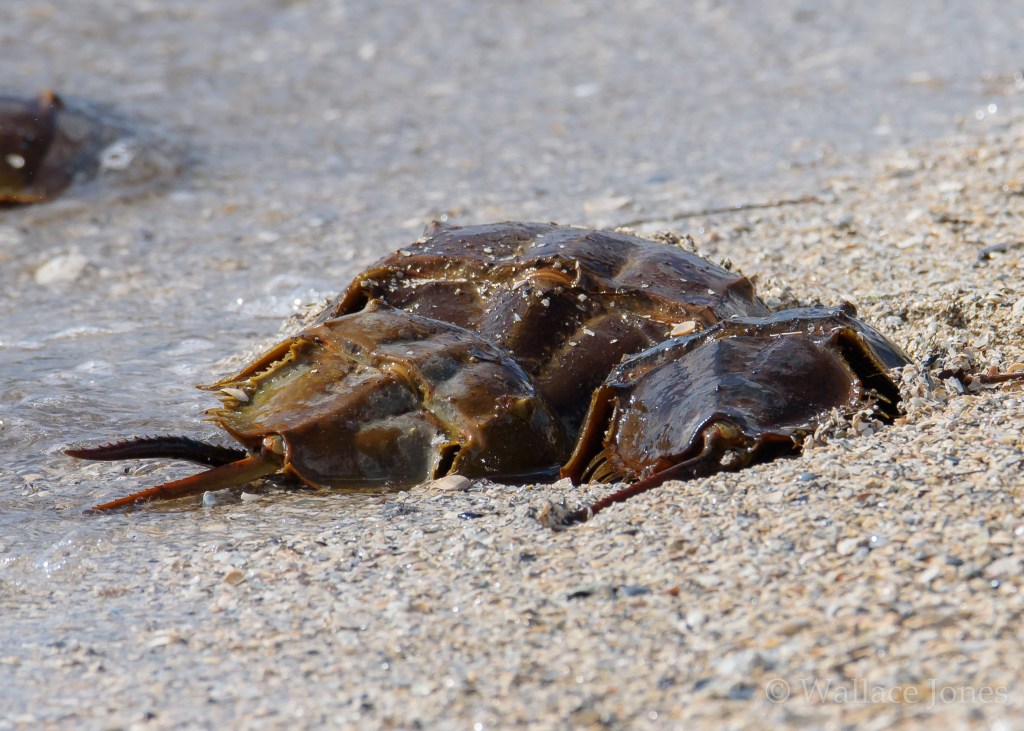
A Ring-billed Gull scoops up eggs as quickly as they become available.
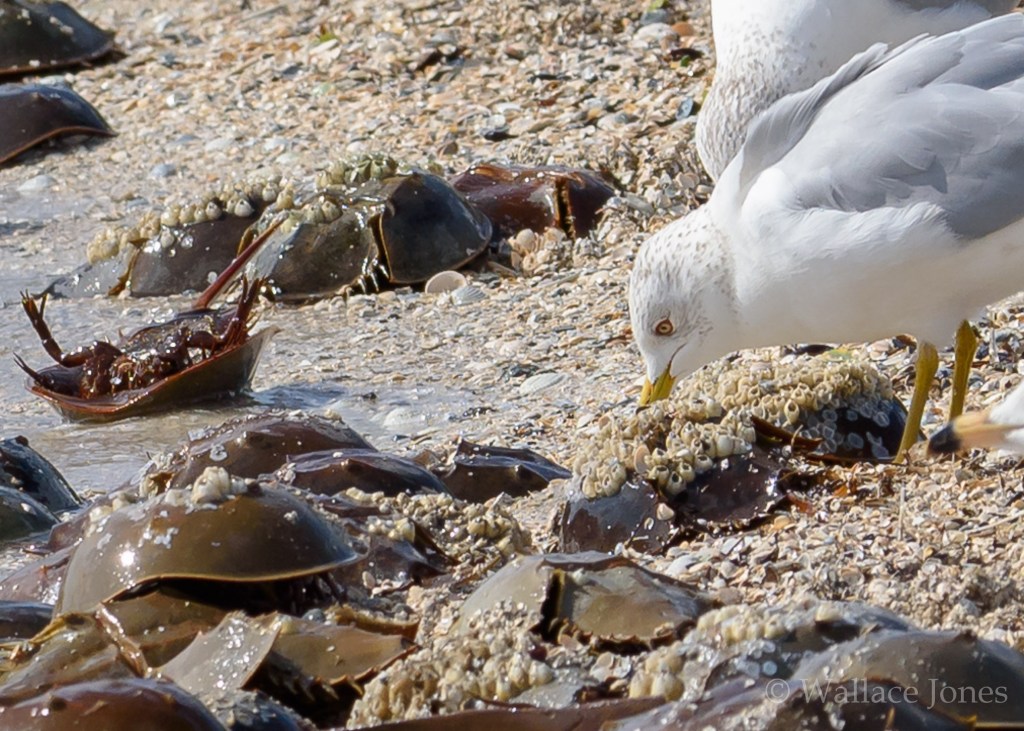
Black Skimmers present a unique profile from the rear and quite another as they make a turn.
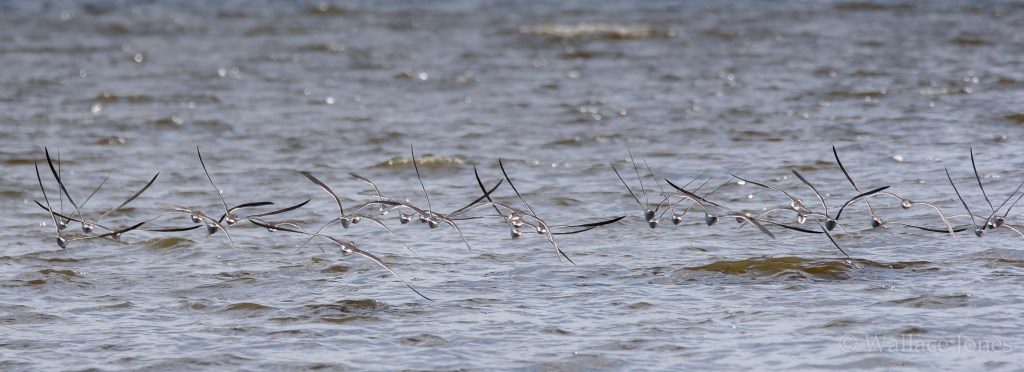

Dunlin, in non-breeding plumage, were the most numerous shorebird we encountered on this day. You can see a horseshoe crab egg in this Dunlin’s beak.

An elegant American Avocet. No doubt this is a wading bird with those legs! Sometimes, one just has to stop and enjoy the view as she nestled among the shells and gazed at the incoming waves.
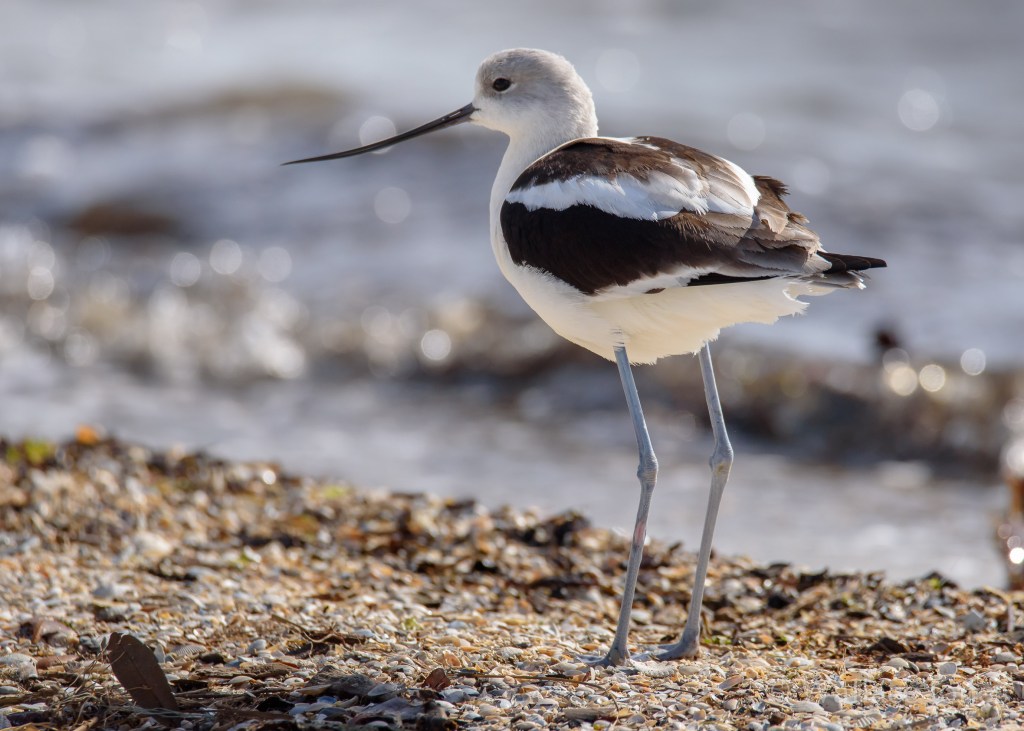

North America’s smallest shorebird, the Least Sandpiper, can be distinguished by its small size (5-6 inches/13-15 cm), slightly curved bill and yellowish legs.

The Semipalmated Sandpiper is named for webbing between its toes, but that’s hard to see in the field. They are slightly larger than the Least, have a bit shorter/stouter bill and blackish legs.
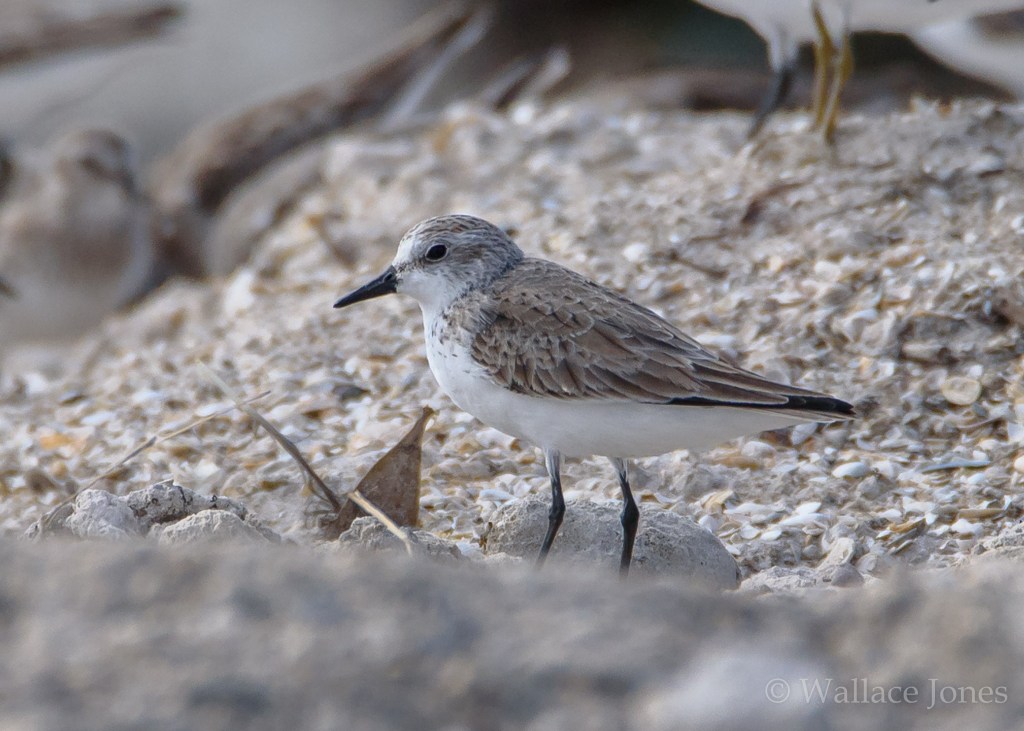
Also a bit larger than the Least, a Western Sandpiper has a bit longer and dropping bill, usually a less-smudgy breast in non-breeding plumage and blackish legs.
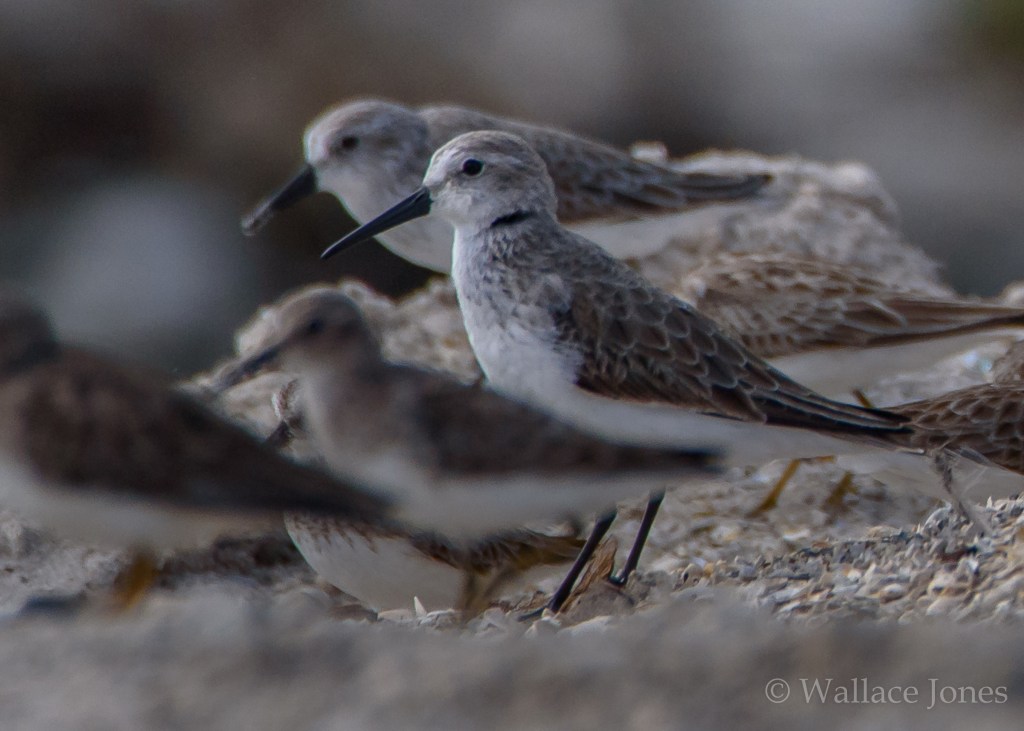
In non-breeding plumage, the Sanderling is pretty easy to spot as it is white below and light gray above. It is a little smaller than a Dunlin and has a shorter bill.
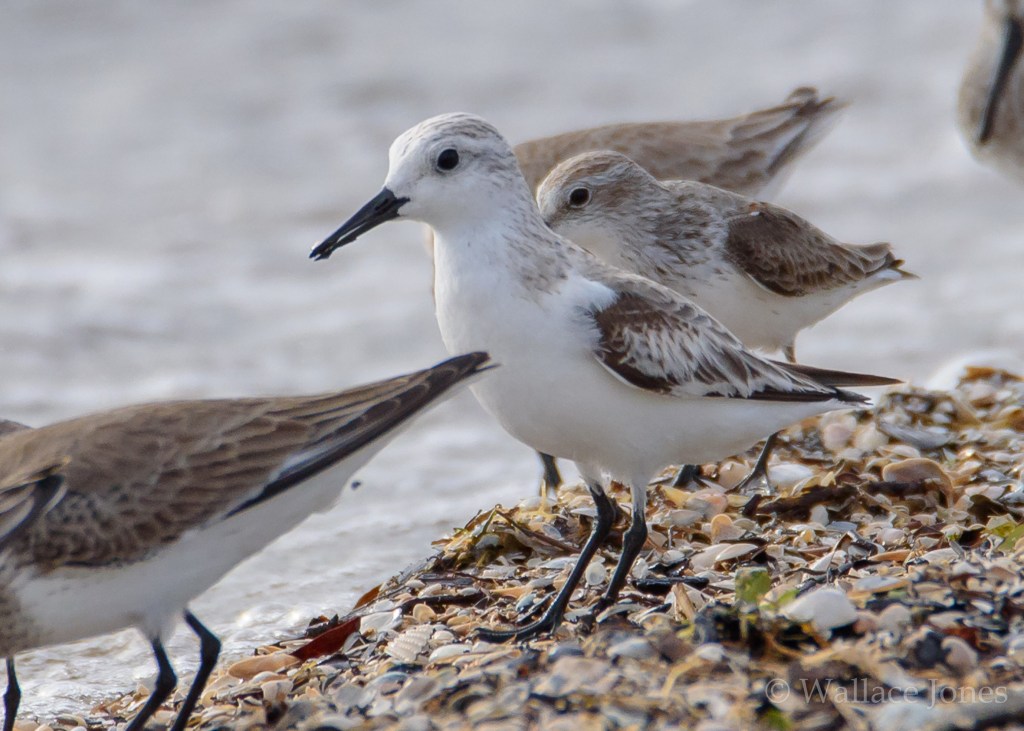
Here you can compare a Dunlin and Least Sandpiper. They look like twins! Except for that size thing.
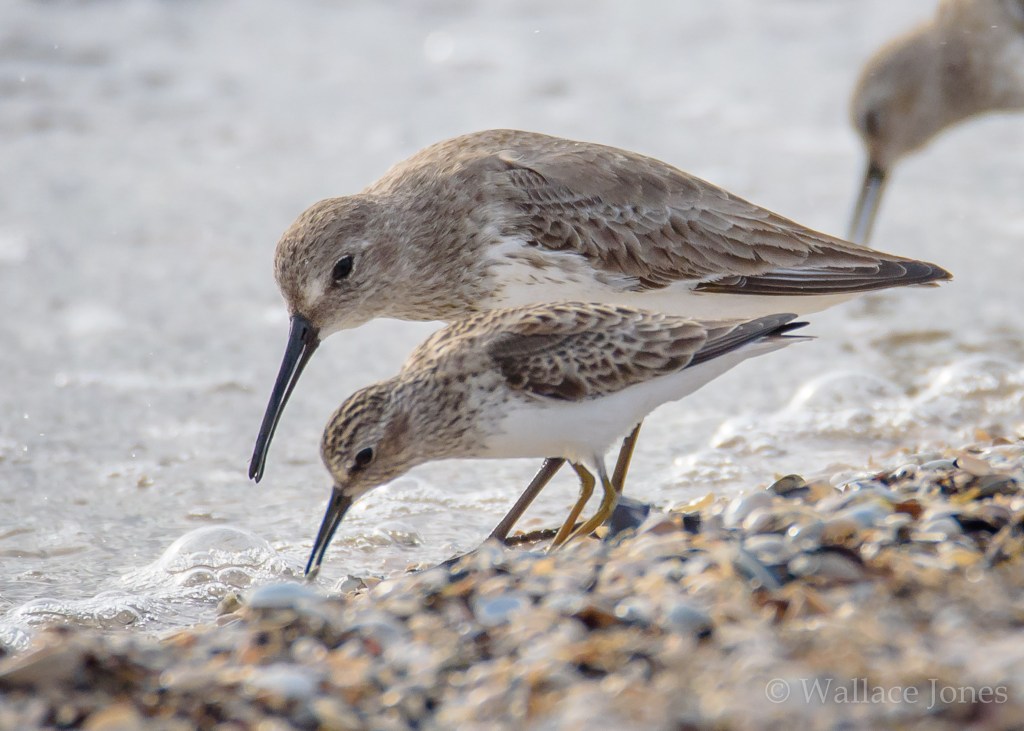
A Ring-billed Gull among Dunlins and Sanderlings gives an idea of their size difference.
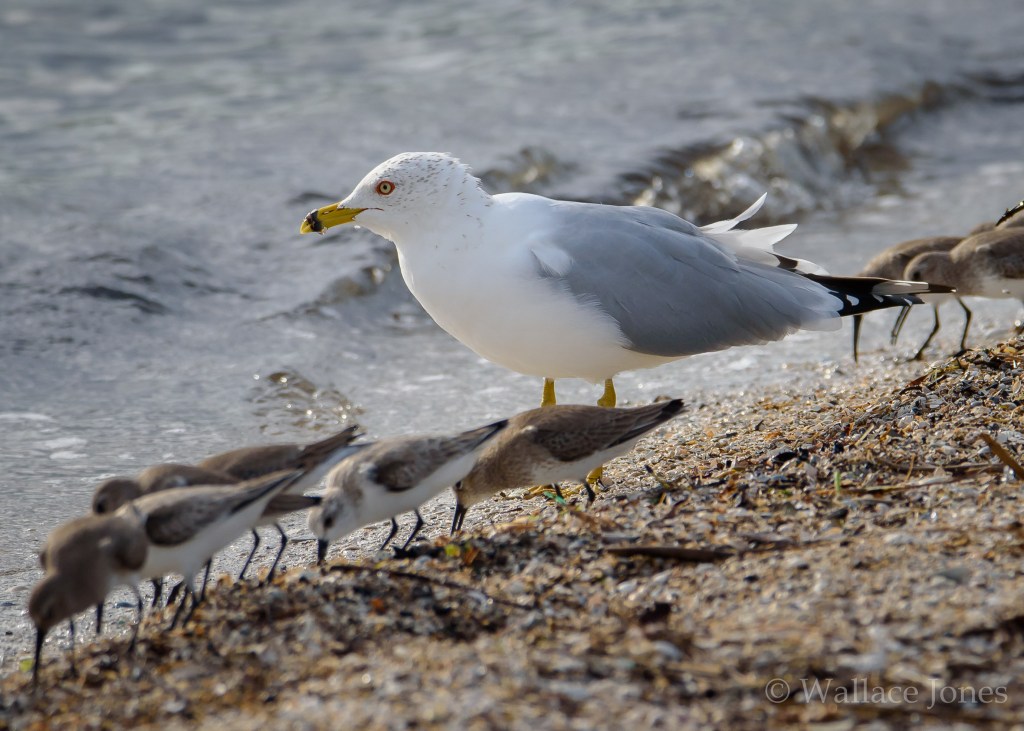
Along the Black Point Wildlife Drive, a Snowy Egret hunts for supper before it becomes dark.
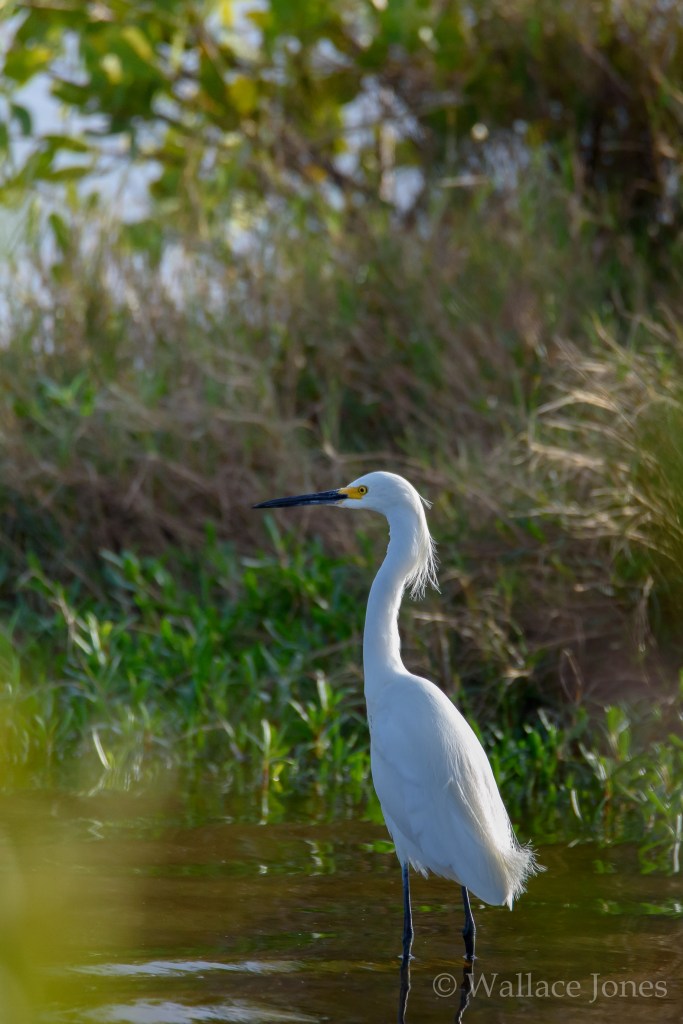
We couldn’t tell if this Lesser Yellowlegs was hunting or simply admiring himself.
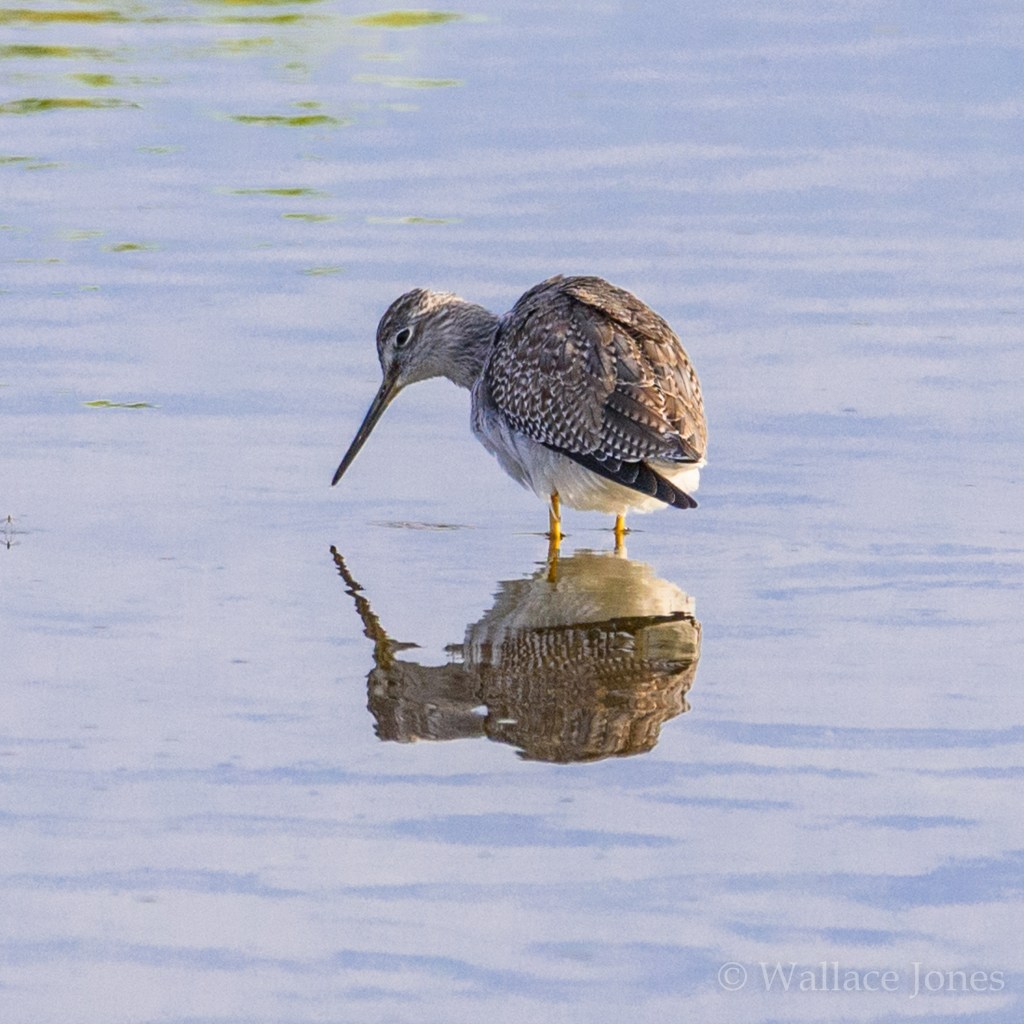
Not much doubt about a Northern Harrier being serious! He made repeated passes where dozens of shorebirds were foraging. The Harrier prefers small rodents but will readily take a shorebird, as they are apparently aware!
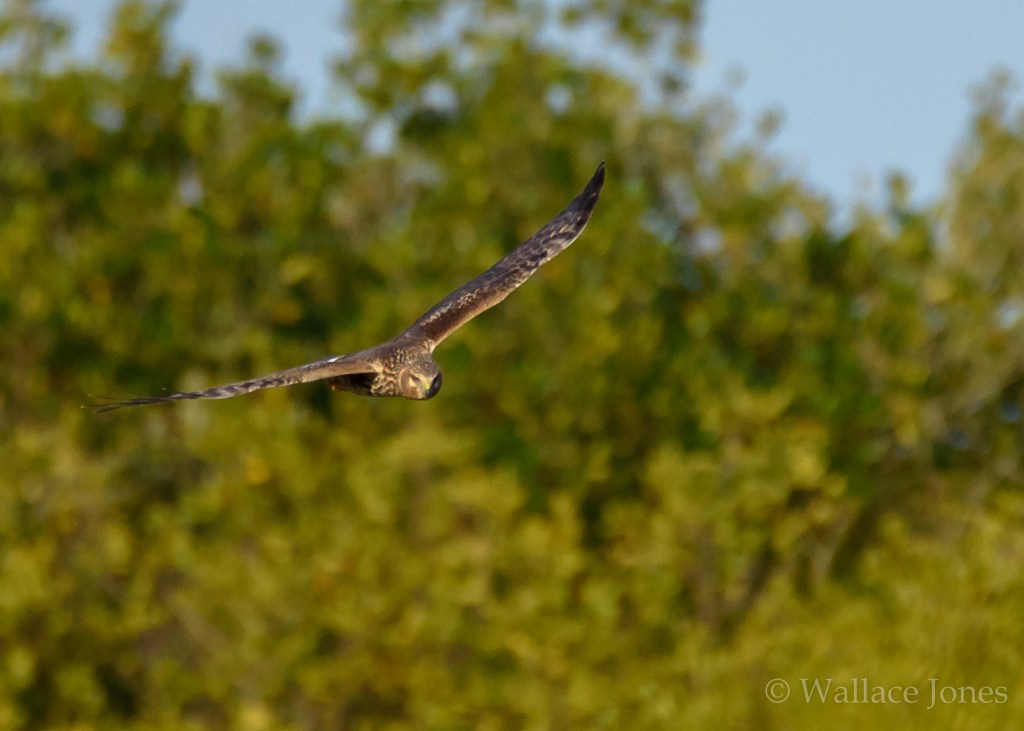
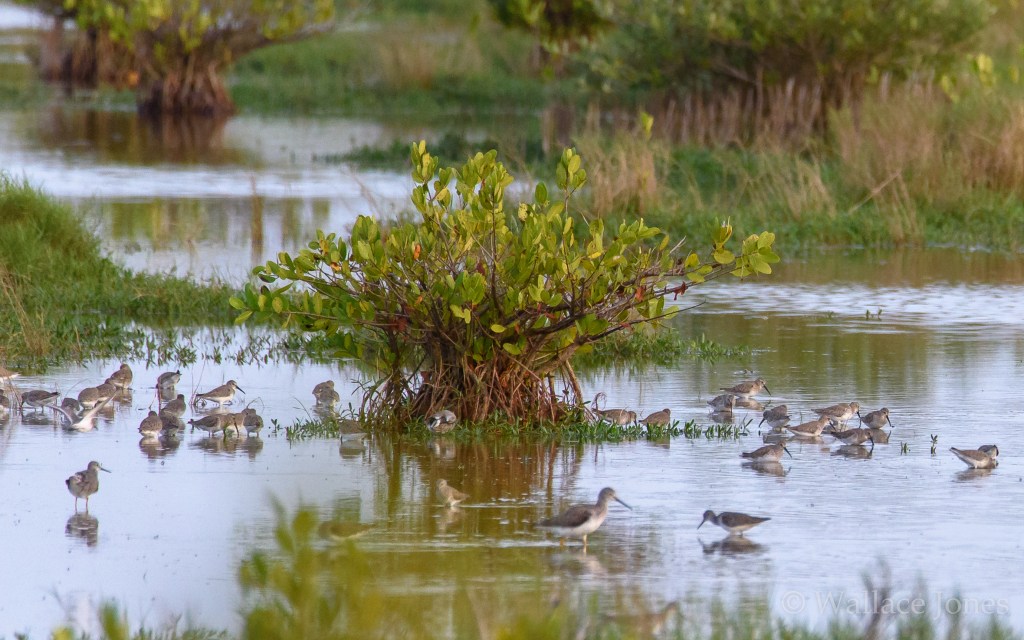
As the sun begins to get low over the marsh, we begin our exit, albeit reluctantly.

We watched waves of wading birds search for roosting spots in the tall grasses of the refuge. Glossy Ibises numbered over a hundred.
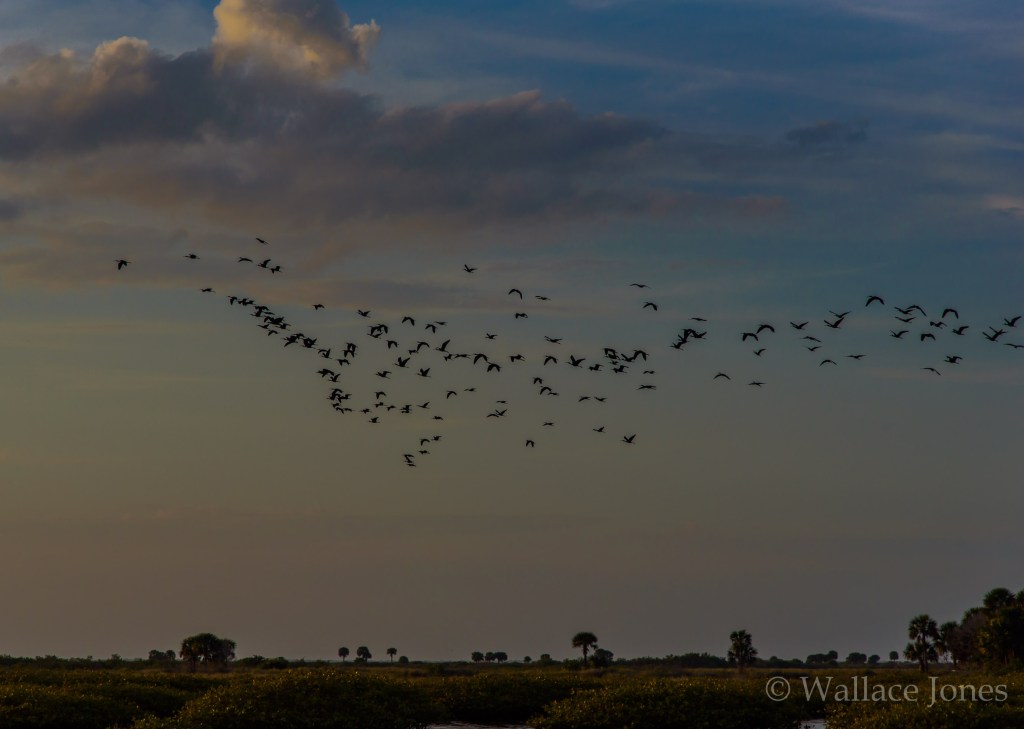
Over two-hundred Snowy Egrets fluttered in front of us and eventually vanished in the reeds as darkness enveloped the marsh.
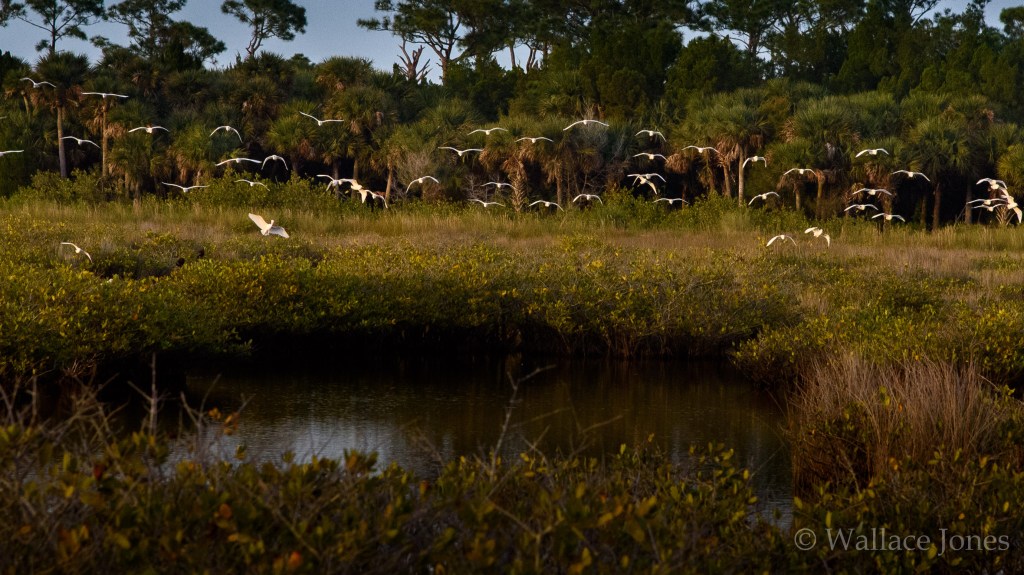
A dozen Great Egret in one group is quite a sight. We saw four such groups.
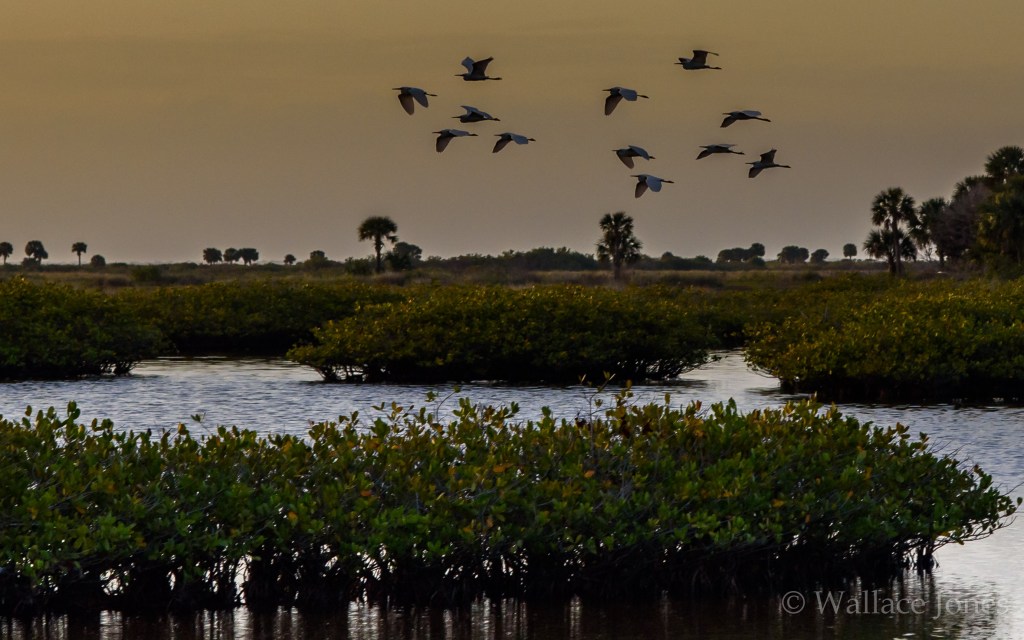
The last rays of the sun ended our day in spectacular fashion!

From before sunrise to after sunset, what a day! If you have a chance to visit a similar refuge, take advantage of it as often as possible. We can’t wait for a return trip!
Enjoy your search for your own natural place and come back for a visit!
“Walked two hours without seeing another human” – now that’s the key to a successful walk, Wally. Yellow-rumped Warblers and Eastern Phoebes, and many other migrants have arrived here; in fact phoebes are already nesting. Rest assured we will take good care of them!
LikeLike
Thank you, David, for taking care of “our” birds!
Yes, we are very fortunate to have several spots we can visit where the chance of encountering other people is very remote. The wildlife seems to like it that way, too!
Get out when you have a chance and enjoy the Spring!
LikeLike
Thank you Wally for that information about Horseshoe Crabs. In the modern world I guess they should be grateful that their flesh or any other part of their body has not landed on the culinary or cultural agenda. That really would finish them off. I do like the photo of the Dunlin and the Least Sandpiper together, another trick of the waders fraternity with which to fool the unwary birder. We had our warmest day today – if you believe the newspapers print and online whose stories are penned by southern softies who get lost if they venture out of the M25. Pretty cold this morning with four layers on top and two below.
Enjoy that sunshine and send us some. We lost our trip to Greece this May – again.
LikeLike
It was refreshing to observe the little shorebirds from a few yards away. Normally, squinting at them through a scope is the best we can do.
With the first official day of spring now more than a week in the past, we are experiencing warm days and ever-increasing humidity. Hopefully, it shall soon send the bulk of our tourists scurrying north along with the remaining passerines.
We hope next year will find you telling us all about the wonders of the Greek isles.
It is a very sad thing our lives have been turned upside down, whether by pandemic or politician. Or is that redundant?
On a brighter note, the sun rose again today and so did we! Off to chase birds, blooms and bugs ……
LikeLike
Beautiful captures, Wally!
LikeLike
Thank you very much, Donna. Lots of photo (and gawking) ops over there!
LikeLike
For all of these years, I’ve been certain that horseshoe crabs are true crabs. Whoops! That’s interesting, about their medical use, and good that some adjustments are beginning to be made.
I was most intrigued by your photo of the Dunlin and Least Sandpiper. I have a photo that shows a pair very much like those, and I assumed that it was parent and offspring because of the size difference — they certainly seemed to be mirror images of each other. Now, I’m not so sure. Once I managed to lay my hands on the photo, I’ll take a better look.
One bird that I can identify is the ring-billed gull that’s hanging out at the Brazoria refuge. It seems odd to me. He’s always alone, and always on the same little shell island. Maybe he’s the Thoreau of the bird world — or the Garbo!
Your sunset photos always are so lovely. Even without a single bird, they’d be special — but thank goodness for the birds.
LikeLike
I think most folks consider horseshoe crabs to be true crabs. Those darned misleading scientists!
It would be rare to see a juvenile Dunlin south of the Arctic, where they breed. Many shorebirds have similar plumage, especially during migration. That’s what makes birding fun!
Your island gull likely found a constant food source! Their motto is: “If the buffet ain’t empty, don’t leave it.”
Thank you for the kind photo remarks. Sometimes, they are almost an afterthought as we just enjoy the moment.
A new week to explore. Yay!
LikeLike
What an awesome day you had, Wally as evidenced by your awesome photos!
I especially enjoyed your encounters with the horseshoe crabs. I’d like to see that myself some day.
LikeLike
It was a better than average day, Ed!
Mark you calendar for Valentine’s Day through Easter. That’s the peak time for crab mating along the Space Coast. We found all of these along West Gator Creek Road almost within sight of the main refuge road.
It’s warming up here and everything seems to be very active outdoors!
Take care and take pictures.
LikeLiked by 1 person
Superb photography loving those moody sunset shots!
Nice write up on the ‘crabs’, very informative.
Things are starting to ease up over here and the weathers looking great mid-week so the hibernating butterflies should be out in force (about time) and so will we!
LikeLike
Hi, Brian! Thanks for the nice comments.
Very happy to hear there may some light at the end of your tunnel. (Hopefully, it won’t be another oncoming train!) Looking forward to your butterfly photos.
LikeLiked by 1 person
What a wonderful end to a fabulous day, Wally! Fascinating information about the Horseshoe Crabs. No wonder they are a near-threatened species with the odds stacked against them like that.
Great narrative and images as always, but this time I’m going to pick out the first shot of the American Avocet (so elegant) and that of the Lesser Yellowlegs as being my favourites.
I hope that all is OK with you there. It’s been a funny old week here, but we’re doing OK. Best wishes to you both – – – Richard
LikeLike
Thank you, Richard. It really was a special day.
We grew up trying to avoid stepping on Horseshoe Crabs as we ran up and down the beaches in our bare feet. Those were the days.
All is very well here. We each other and our health and our birds. What else could one wish for?
Our very best to you and Lindsay.
LikeLike